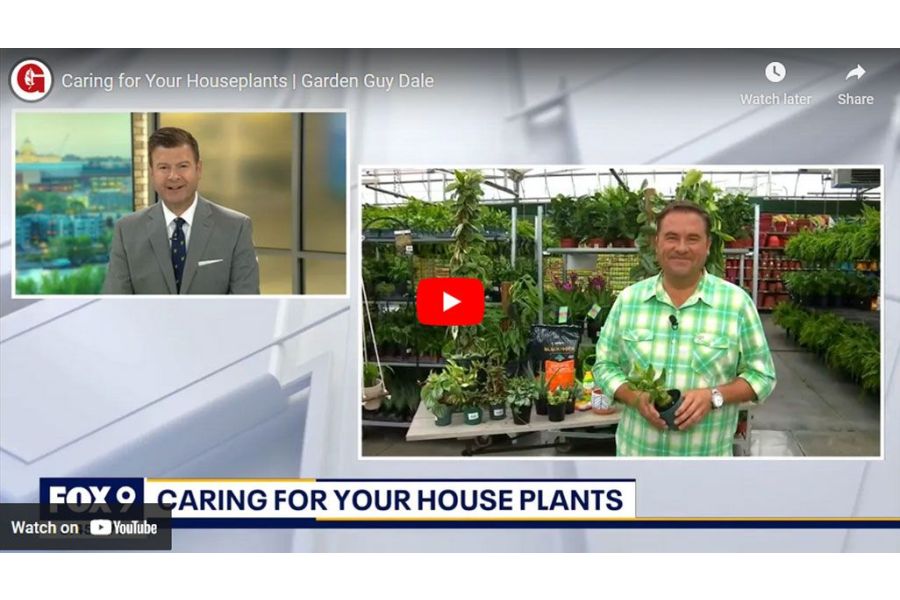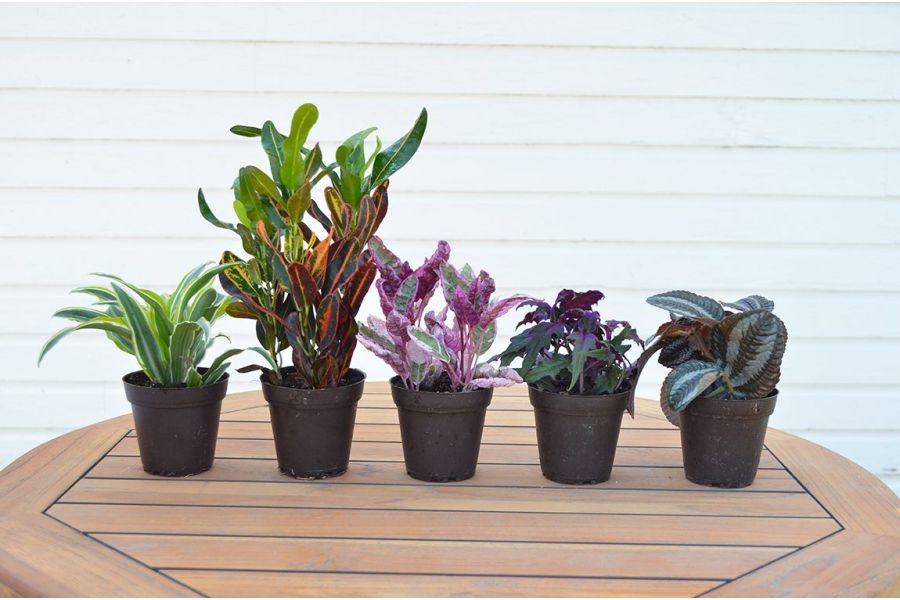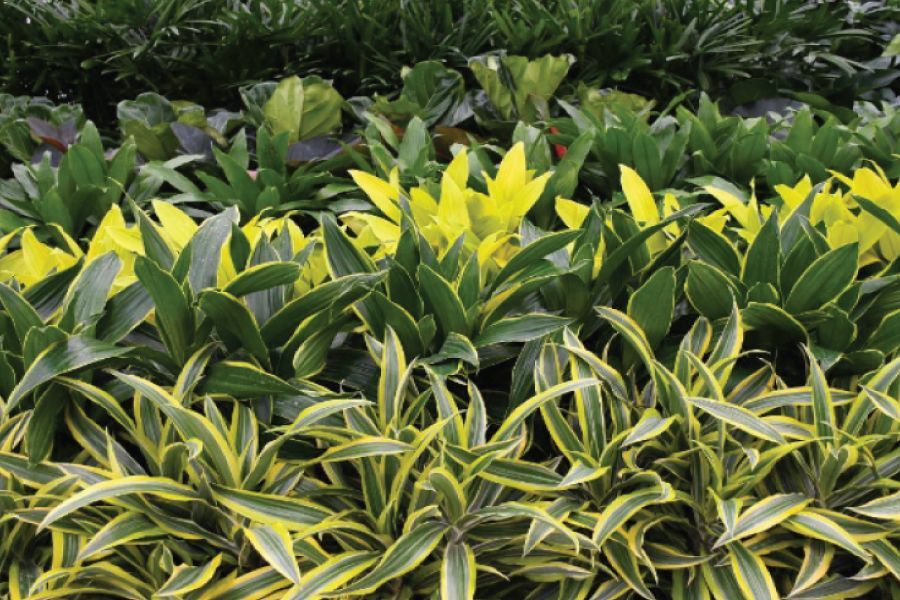On cold, icy, snowy days my houseplants are my therapy. A green fix. Or, in the case of my Rex begonia ‘Black Tie’, a mix of black, deep maroon, pink and silver fix!
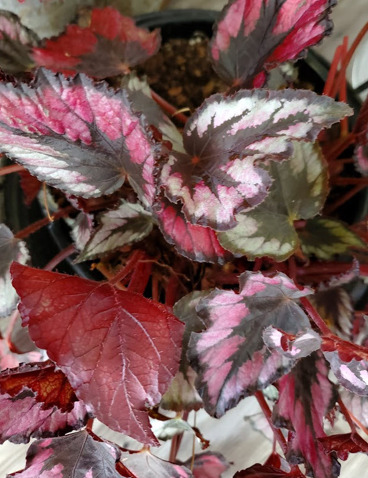
Rex Begonia 'Black Tie' 1-11-23
How do we choose plants? Good question. The above plant (my Black Tie beauty) was chosen because it’s beautiful. The really fun part is that it’s been over a year, and I haven’t killed him! This plant did enjoy the summer on my porch in filtered sun.
Most of us can’t help but choose plants by the way they look and/or make us feel. THEN we try to figure out how to make them thrive. I have a friend who is obsessed with obscure orchids and begonias. She’s really into propagating them, nurturing them. Honestly, she boggles my mind! There are a lot of plant aficionados, and I am in awe of them as rare plant collectors.
While I wouldn’t fit that category, I try to follow some criteria that allows for overall plant health. And if you’re someone that gets sad if you lose a plant, then press on. I promise to offer good advice.
This crazy plant is going to bloom for a 3rd time this season! It's a Thanksgiving cactus that did not bloom for 2 years and now she’s outdoing herself. Why? Because I paid some attention by NOT overwatering and getting her in the proper light.
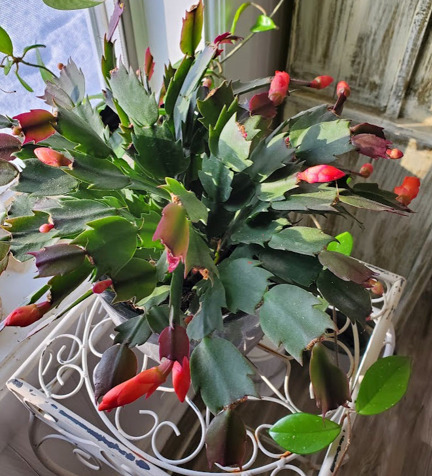
Thanksgiving Cactus 1-11-23 – that other leaf you see in the foreground is a hoya from a completely different pot!
Let’s talk about light. The terms used may sound basic but what do they really mean. Here’s a quick look at those terms:
Direct Light = sunlight that shines in directly from a south or west window, unobstructed by a tree or shrub. Most houseplants don’t like direct light. Examples of plants that would include a Bird of Paradise or a fruit tree such as a Lemon. Some palm trees and more.
Bright, indirect light = this is an area where the light is bright and steady but not shining directly on the plant any longer than 1 hour a day. So, this could be that window that has a tree/shrub obstructing your south or west window. This covers a lot more plants including types of pothos, ferns, philodendrons, ficus and more. Here’s a link to Gertens plants to give you an idea of the variety!
Medium light = is the area of a room that is about half the distance between a window and a back wall. The plants still get light but a “muted” version. This group would include some palms (check with the nursery), dracaenas, sansevierias and some ficus too.
Low light = this is a space that is about 7 or more feet from a window. It can also be a place where there’s no natural light but a place like your office or bathroom. These plants typically grow slowly. There are plenty of options including aglaonemas, cast iron plant, ZZ plants and some pothos. Check with the nursery you’re buying from!
Artificial lights definitely allow more options, but the best ones are grow lights if you want the plant to thrive. Regular home lighting doesn’t generally offer enough light for long term success.
Oh, and be careful of drafts! Hot or cold. Most plants don’t care for the extremes. Below is my jade plant in a south window with a shade tree and a cover over the register to direct the flow. This plant seems happy showing small signs of growth. It’s been about 7 months here!
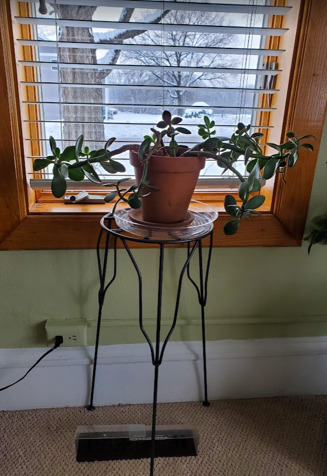
Jade 1-11-23
And now a note on watering... do NOT overwater. It’s better to underwater than overwater! That’s the very first thing to learn. We all have this tendency to water if the plant looks “droopy”. Restrain yourself. I’ve had to do that with this Pothos picta. You can see the yellow in a couple of leaves. While it’s now on the road to recovery, I had to put myself on a schedule. I mean the plant; the plant is on a schedule!
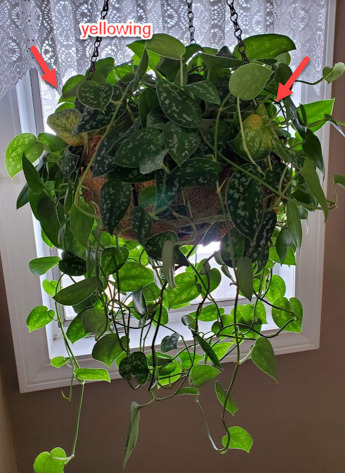 Pothos Picta 1-11-23
Pothos Picta 1-11-23
I love snow for snowshoeing. I just don’t want a bazillion feet all at once. I don’t like ice, I’m not a hockey player! The darkness of winter and the subzero cold can certainly affect our moods but houseplants and caring for them helps us get through it!
The plant below is a cutting from my grandmother’s plant. She was born in 1900. I LOVE this plant. As it was passed down from daughters and cousins, grandma called it a Chocolate Soldier. I looked it up and found its Latin name is Episcia cupreata. It’s a very tough plant! Interestingly it’s also fragile looking. Just like my grandma was.
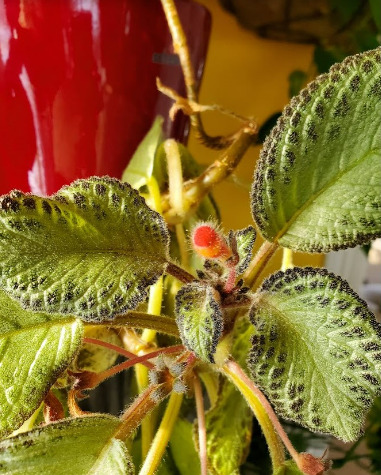
Episcia cupreata Chocolate Soldier
Here’s to 2023 and all the green therapy we can handle,


